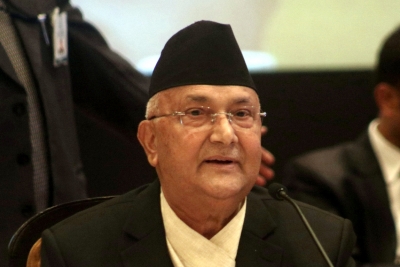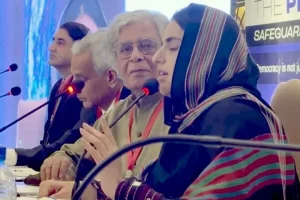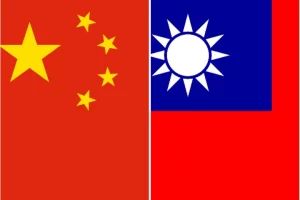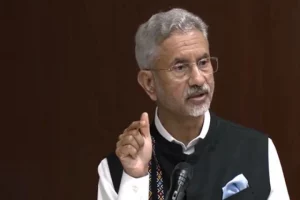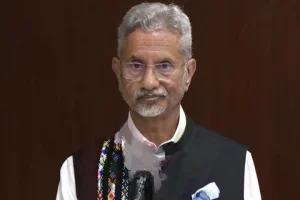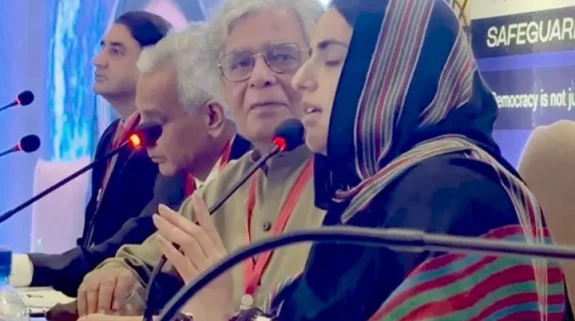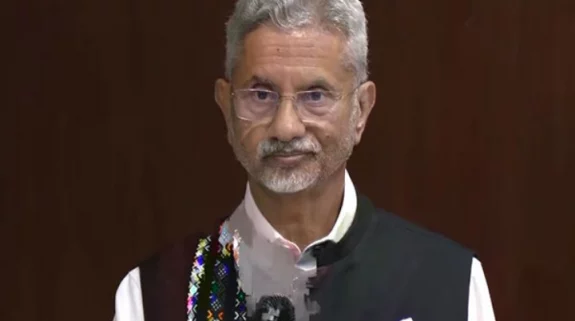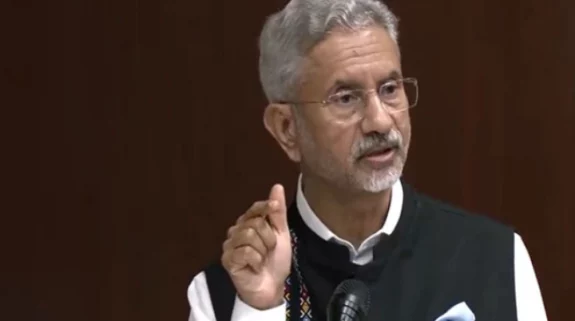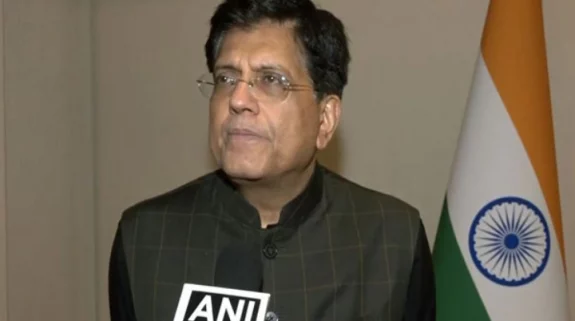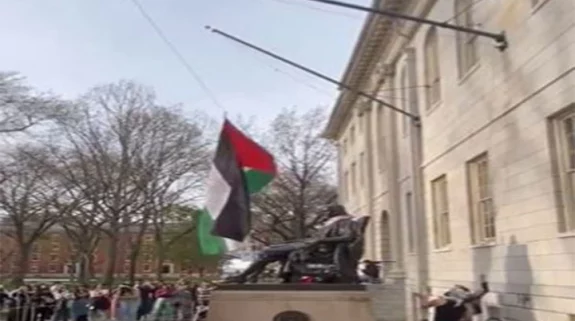The Kali Gandaki flows through one of the deepest gorges in the world flanking the Dhaulagiri and the Annapurna mountains in Nepal. In the bed of the river one finds ammonites from the pre Jurassic period. It is unbelievable that marine fossils could be found at a height of 3,000 meters. Hence, religious significance is attached to these elements. Hindus worship them as Shaligrams symbolising Lord Vishnu. Though not as ancient as these sacred stones – the analogy of a Yam stuck between two boulders that King Prithvi Narayan Shah used to describe his own country has remained frozen in time.
Many would argue that Nepal has been quite comfortable being sandwiched between two giant neighbours. From time to time, the yam adjusted its position a little from North to South only to be pushed or pulled back to its original place. The big rocks on either side were used to these periodic seismic activity but did not react knowing well that no tectonic shifts were possible. But, over the past six years a slow Northward movement of the subterranean plates has been discernible.
2015– Change in popular discourse
Popular discourse in Nepal considers the alleged or perceived “blockade” of 2015 as the tipping point that started the definite Northward slide towards China. This culminated through a protracted dialectical process of political realignments in the unapologetically China doting KP Oli government coming into power. If Oli, like Barkis, was willing China was ready to play footsie. In his new book, All Roads Lead North, Amish Raj Mulmi explains this flirtation quoting the Chinese poet Qu Yuan – “a great joy is to make friends anew”.
The question arises as to why the denouement of 2015 turned out to be a more significant watershed than a similar impasse with the Rajiv Gandhi government in 1989? Mulmi analyses this at length. But, the short answer is the Nepal of 2015 is not the same as that of 1989. The Indian establishment failed to recognise this change. Even after six years South Block is still trying to repair the damage. While India appears to be using old tools and traditional methods – China has upped its game both in technique and execution.
Many of us were bemused to find that over the last 30 years – since the transition to democracy – the main protagonists of Nepali politics have remained largely the same. The Prime Ministership has been a game of musical chairs. Some old actors like G.P. Koirala and K.P. Bhattarai passed away. In their place the Maoists leaders like Prachanda and Baburam Bhattarai came to the mainstream. During this period, intellectual discourse and political commentary was dominated by an intelligentsia, mostly educated in India. They donned Nepali nationalism but their sensibilities were essentially South Asian.
However, a silent transformation has been underway, over the last decade that was missed by Nepal watchers in Delhi. On the one hand, a new generation has emerged whose horizon extends far beyond India. With increased affluence and access to scholarships, many young Nepalis today go overseas for studies. Apart from the US and UK, Thailand, Singapore, Australia and UAE have become popular destinations at the top end. India is no longer the budget choice for higher studies. Medical and Engineering colleges in China are gaining popularity.
Amish Raj Mulmi epitomises this “gen next” Nepali intelligentsia. According to him, “2015 blockade (is) their first substantive political memory – cementing their view that India does not have Nepal interests at heart”. Mulmi’s thesis may be exaggerated, as he does appear to over-romanticise the flowering Sino-Nepal relationship. Preceding 2015 was the “Maoist War'' that dominated the first decade of the twenty-first century. Though the Kathmandu elite may have resented India’s involvement in the post-war developments, the majority of Nepalis outside the valley going down to the Terai acknowledge that without India’s involvement the crisis could not have been resolved. Thus the ordinary Nepali may not be as enamoured by China as their urban siblings. But, for sure, India cannot look at Nepal in 2020 through the prism of the nineteenth and twentieth century.
The "China card"
It would be both incorrect and unfair to say that India has been blind or insensitive to the endemic changes in Nepal. However, India’s focus has been more on strategic implications of Nepal’s own foreign policy and how other powers – primarily China -are engaging with its Himalayan neighbour. This is predicated on the premise that Nepal acts primarily at the prodding of international interests rather than its own volition. Such a perception has been created over the years first by the Monarchy and then the civilian rulers by constantly playing the so called “China Card”.
Without doubt the Chinese have shed the inhibition and come out from behind the curtains to make their affair with the Nepal polity public. They are no longer shy to be seen socialising Nepali politicians in public with the same ease and familiarity as Indian diplomats of yore. This has understandably made India wary and go into a sulk like a jilted lover. The Oli government seemed to be fascinated by the polyandrous prospects of triangular relationships.
But, India’s preoccupation with China’s activity in Nepal has – perhaps – taken its eyes off the silent churn happening inside the landlocked country. A recent instance was the stand-off on the Lipu Lekh cartography. Though Indian assumed Nepal was acting merely as a pawn of China, Oli’s domestic political compulsions were the primary driving force. Oli’s subsequent manoeuvres following the “map” imbroglio to avert a split of the Nepal Communist Party (though subsequently dissolved) and his own ouster as Prime Minister – shows that Nepali politicians have come of age in managing their own affairs rather than being overdependent on any one of the big brothers.
India has traditionally harped on the religious, cultural and economic ties between the two countries to claim special ties. This was embodied in the 1950 Indo-Nepal Trade Treaty which is followed more by exception than a rule. However, it has always been subliminally resented by the Nepalis as they feel it puts them on an unequal footing. This has provided fuel to an undercurrent of “anti-Indianism” that generations of Nepali monarchs and politicians have exploited to their advantage. China, on the other hand, has been more savvy creating an illusion of equality and invoking historical civilisational links – Tibet and Buddhist connections – through the Nepali academia.
The Chinese intervention has been multipronged. Apart from the obvious political overtures it has on boarded Nepal into initiatives like the Trans-Himalyan Quad (as an answer to SAARC) and co-opted it into initiatives like Covid-19 Management. On the economic front China has consistently outdone India not just in spends but also visibility by investing in “showcase” projects like eight-lane carriageways with promises of mega development that will transform Nepal into a postmodern Asian jewel.
China's economic influence on Nepal
Not surprisingly China is Nepal’s second largest trading partner after India. But, it is now the largest Foreign Investor in Nepal by far. However, even more remarkable is how the Chinese have inveigled their way into the Nepalese economy and also making silent forays into the cultural sphere. Thamel, the tourist hub of Kathmandu, now boasts of a mini ChinaTown and there is a Chinese Book Store down in Durbar Marg selling translations of Mandarin literature in Nepali and English.
Tourism in Nepal, which used to be a backpackers paradise, has been replaced with more affluent Chinese and East Asian tourists on the Buddhist Circuit. Rich Indian holiday makers have abandoned Nepal – as foreign travel has become more accessible and the charm of “imported” goods has waned with most products being available in India. Even Casinos do not hold the same attraction as before. The Indian Trading community comprising largely second and third generation business families who migrated from Rajasthan and later from Burma have slipped in the pecking order.
India's Nepal policy
India’s Nepal Policy cannot be a rehash of the past. Simple linear evolution will not work. It has to be reimagined and reinvented. More of the same is not the answer. It requires disruption. The proverbial Yam has to be extracted from between the boulders and replanted on fertile terrain away from the rocky desert of the North. Otherwise, it runs the risk of being fossilised overtime like the Shaligrams.
(The author is a political commentator, columnist and writer)






